Broken Sword: The Sleeping Dragon
Can Revolution revive the sleeping genre?
The adventure game genre must be a tough one to sell to risk averse publishers these days. Here's roughly how a fictitious developer-publisher meeting might play out.
"So it's an adventure game?" utters The Suit, an Oswald Boateng-clad publishing exec, creaking back in a black leather chair arching a carefully plucked eyebrow. "But you can't shoot anyone..."
This wasn't a good start, but it was a predictable one. A sarcastic smile began to creep across the already-cynical publisher.
Shifting in his seat, the nervous bearded developer waved assertively "but the emphasis is on the narrat..."
Too late, The Suit had already tasted blood.
"And where's the fighting, the driving, the flying? You seriously expect gamers to get excited about wandering around playing Sherlock?"
"But this is about atmosphere, ambience... a rich storyline... character developm--"
The Suit sported the smile of the cynic: "If I want a story I'll read a frickin' book. This is about as far from our vision of an adventure game as you are from getting a deal! Next!"
And with that, our plucky developer was escorted from the room, tail between legs, wishing it was 1993.
With bills to pay and a kid on the way, he's forced to rejig the design doc and produce Generic Action Adventure 56. He returns clean shaven: "Imagine Tomb Raider crossed with GTA and Mario set in a near future-past".
"You've got a deal", The Suit beams. Game signed, bills paid, publisher happy, developer wishing it was 1993.
Sweet talking'
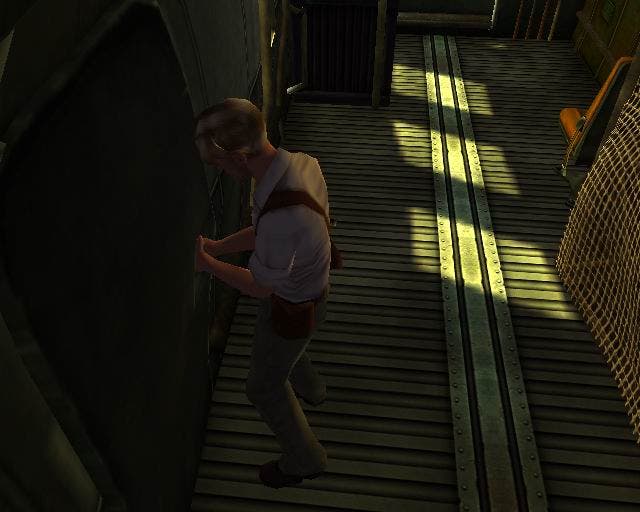
So how did Charles Cecil and his band of Revolutionaries manage to convince THQ - a publisher not normally associated with risk taking verve - to sign up his first adventure game in six years? Apart from being one of the nicest men in the games industry, Cecil has a fairly compelling track record of success. Not only have all his adventure titles (and we're including his procession of Artic-published text adventures on the ZX Spectrum such as Ship Of Doom here, fact fiends) been critically well received, but the two Broken Sword titles even managed to dispel the myth that you can't sell point and clickers to a console audience. In fact, in one year the readers of Official PlayStation Magazine voted the original in the top five best PSone games ever released. So stick that in your fact pipe, Mr Publisher.
The return of the series after such a long period in the wilderness has presented the team with numerous problems, but also opportunities, notably how to take the series into full 3D while retaining its unique graphical styling, how to overhaul the controls, and, perhaps most importantly, how best to reinvent a narrative/puzzle-based genre without diluting what made it so popular in the first place.
The bedrock of its success is Revolution's ability to spin a compelling yarn that sucks the player in and keeps them there, held together by a cunning puzzle system that's satisfying without straying too far into the realms of obscurity. The third episode once again features George and Nico, sucked into a good vs. evil tale that kicks off with a plane crash in the Congo and a murder in Paris, before following the trail of evil via Glastonbury (that's Glastonbreee and not, for the benefit of our American readers, Glastonberry), and eventually Prague. An evil bunch headed up by a deathly ill looking man by the name of Sussaro are determined to harness the power of Ley lines or Dragon Power to their own nefarious ends, and naturally you've got to put a stop to their plans in true save-the-world-and-get-the-girl adventure game style.
Rave from the grave
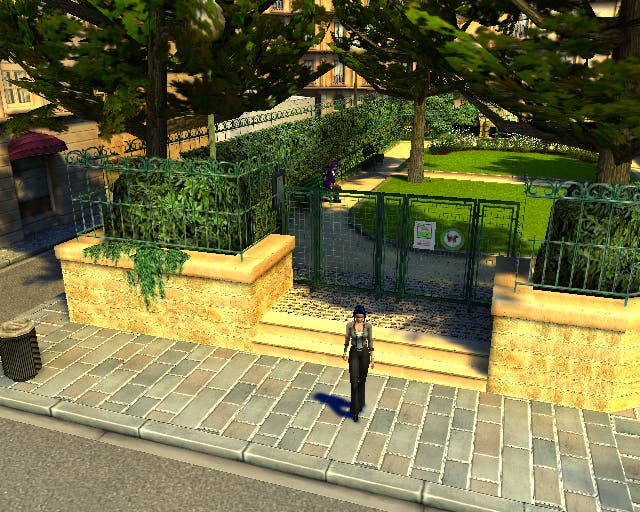
At the core of The Sleeping Dragon, the fundamentals of the gameplay remain mercifully intact. It's still very much a case of talking to everyone you possibly can, picking up everything that's not nailed down, being incredibly observant and applying a degree of lateral thought that only ever seems to be required for adventure games. Anyone hungering for a gaming style long since thought defunct will be delighted to see the whole concept dragged up to date with a better (console) control system, radically improved graphics and a less frustrating interactive element. Whether they'll approve of the action elements is another matter, but more of that later.
The first area Cecil and co. tackled was the controls. In a genre designed for mouse control, it's fair to say that until now no-one had worked out a satisfying system on consoles, and the team came up with a neat solution to the perennial headache; scrap it completely. A couple of years back they crammed The Shadow Of The Templar into the GBA so successfully and with a control system so head-slappingly intuitive that it was obvious that it would have to form the basis of The Sleeping Dragon. Thus, instead of scouring the screen for 'hot spots' with a cursor, players now get a context sensitive system that allows for direct control over George and Nico's basic movements, with commands such as open, push, pull, pick up, talk, examine, jump, listen and so on assigned to the four main joypad buttons - only appearing when the character is in range.
In practice the system makes the game incredibly easy to negotiate, although forces you to walk up to everything in order to see whether there's anything to interact with, whereas before a quick sweep of the cursor could tell you that. As a compromise, we can't imagine there being a more graceful solution for console owners, and as such it's a success.
That's cheating
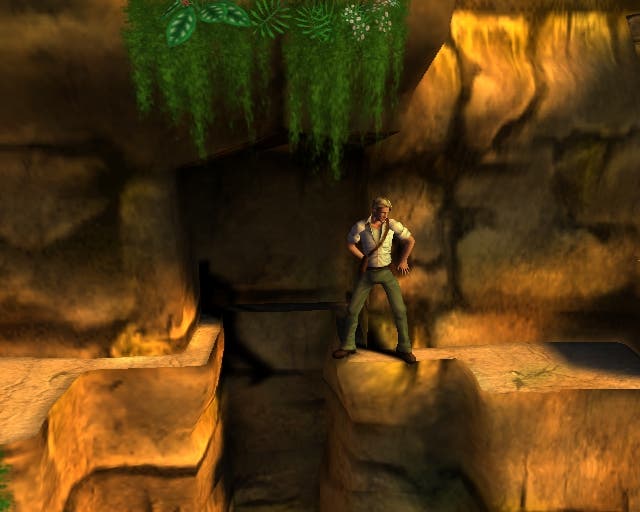
As any hardened adventurer will ruefully note, many a gameplay hour was lost to the old gameplay mechanic of having to literally trawl your mouse cursor over every last pixel in order to discover some obscure object that you had to pick up. The Sleeping Dragon 'cheats' by basically displaying twinkling stars on anything that you can interact with. But die-hards don't need to worry about the dumbing down effect too much - the game's full of random tat that doesn't actually do anything, but can be examined for curiosity's sake anyway. In effect it just serves to keep the frustration value down, although the game features far too many incidental objects that turn out to be red herrings.
What might cause some sleepless nights for purists are the regular action-inspired elements that force you to solve numerous (gasp) block-moving puzzles in classic Tomb Raider style, as well as more Lara-inspired moments that have George and Nico forced to leap across gaps, shimmy across ledges, negotiate spike traps and so on. But unlike Core's finest hour, there's no falling to your doom or pixel perfect precision required; if there's a chasm to traverse or a thin ledge to shuffle across, the command interface will indicate this in the bottom right hand corner of the screen and allow you to perform said task with one click of a button. The rest is merely a case of holding the left stick in the appropriate direction, and so any sense that Revolution has gone all action-adventure on us is kept to a minimum.
In terms of its interface, it's as fluid as we've ever seen being almost totally free of menu layers and clutter. Hitting select calls up the inventory subtly in the top left of the screen, allowing you to cycle through your random tat and combine the egg with the hoover (or whatever) in a couple of button presses, without ever taking you away from the main screen. In common with most adventure titles, there's no combat and therefore no need to worry about health or ammo stocks. It might feel restrictive if you're used to third-person action adventures (and that's what it feels like, given the direct control over their movements), but once you return to the mindset of pure adventuring it makes for a refreshing change to actually have to think your way out of a situation rather than merely charge in with a rocket launcher.
Overhauled
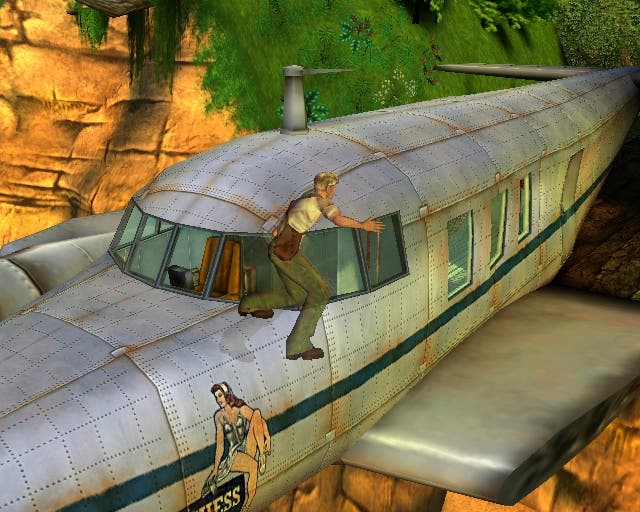
As we touched on previously, the visuals have been radically overhauled, dragged kicking and screaming out of their cartoon-style 2D world into a fully 3D environment that tries to capture what was so unique and refreshing about the originals. Although it uses RenderWare, it's a unique feel among videogames and does an excellent job of aping the subtle, alluring palette and slightly elongated characterisation of the originals. The animation works well with the exceptionally detailed environments and some superb lighting/shadowing effects combine to deliver one of the most carefully considered games of its time. Even the camera work is excellent, taking the Resident Evil concept of providing fixed atmospheric positionings, but obviously without the tiresome need to shoot things you can't even see.
It's by no means perfect, however. The lip-synching, for example, rarely conveys what it's supposed to, and some of the facial expressions and animation aren't quite up to the standards we were hoping for. Compounding this is also a questionable array of voice 'talent' plagued by truly dreadful casting decisions and awful stereotyping that bears little resemblance to reality. Without exaggeration the game is populated with truly cringe-worthy clichés from the word go; the Aussie bum, the weeping Goth girl, the slimy amorous French skateboarder, Tristram the trustafarian hippy, his hatefully plummy girlfriend, the sergeant major dad, Eamon the weary alcoholic Oirish TV presenter, or in fact almost all of the characters you come across for that matter. If they're not being unnecessarily vile and sarcastic, they're just plain unhelpful - or worse - just not very interesting.
One thing you could rely on in LucasArts adventures were the exceptionally well designed characters, who were usually funny with it as well, and the fact we're still harping on about games 10 to 15 years old games is telling. In keeping with previous Revolution titles, The Sleeping Dragon doesn't try to compete with the Lucas approach and plays it straight for the most part, albeit with a wry edge. Now, this isn't a bad thing per se, but we literally wanted to kill every single character within minutes, and hence any real interest in the script soon faded into the ether as we struggled to maintain any connection with anyone.
Kill them now
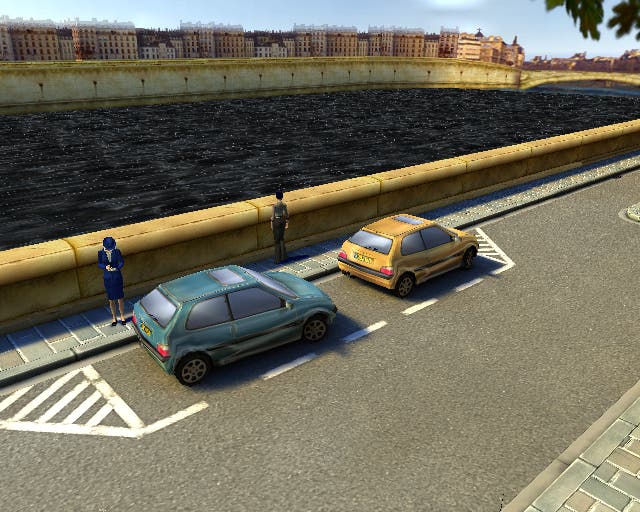
Even the lead characters can't save it; George's attempts at being funny are fairly feeble, and Nico's too wooden to be interesting. You just want one of them to liven things up, for something really bad to happen to them, or for them to stop being so interminably dull, but the sad result is the script isn't up to the job, and the voice actors can't hope to save it anyway. We're almost weeping with anger that this is the case; we so badly wanted The Sleeping Dragon to be the answer to our next-gen adventuring dreams, but it just isn't.
As hardened gamers of twenty odd years of square-eyed vintage with a high tolerance for less than satisfying narrative, we tend to cut some slack to these areas in most games. In fact, you'd be right to argue to that The Sleeping Dragon does a much better job than most games ever bother. It does... but... It does, but we're talking about a game that puts its narrative qualities in the front line, and shines them out like a neon sign. Anyone who reads a lot of literature or watches a lot of movies just won’t accept this, and it's a real shame when the platform it's built on is so solid.
It sounds like a contradiction, but the actual story isn't bad. Without giving too much away, the game is structured to allow Revolution to weave various simultaneous strands before finally joining them all up and allowing you to make sense of it all. Fans of the previous titles will also appreciate the way old characters make an appearance, and elements of the old titles' story make sense in the light of events in The Sleeping Dragon. It's not essential to know much about the previous games, but it will definitely help, and maybe old hands will appreciate the style far more than newcomers.
Click on everything. Examine everything. Talk to everyone about everything.

As many of you will know, some good old-fashioned adventure-puzzling can help make up for many a lacklustre script, but we're sad to report that The Sleeping Dragon often fails to engage here too. For most of the first half of the game, the puzzles are generally so obvious, and the locations so sparse that it's merely a case of applying a tiny amount of logical thought with what's in your inventory and mechanically talking to everyone about everything until something clicks. Only if you've overlooked something (you mean I can climb over that wall?!) does the game come to a grinding halt - otherwise you'll blitz through the first six or seven hours without too much trouble. After that there are some great puzzles that hardened players can really get their teeth into, but it's a long time coming and by then it's tough not to already be somewhat disillusioned with the stereotype frenzy at work in the script and the irritating voiceovers.
Occasionally the game throws in the odd spanner that has you wondering how on earth it reasonably expects anyone to progress without some kind of walkthrough, but that's par for the course in this genre. At least the objects you need to collect are generally obvious, but making every single door an interactable object was a bone-headed design decision given that approximately 90 per cent of them are permanently locked. A good chunk of the game is spent clicking on all sorts of things of absolutely no relevance, and every single time George or Nico utters an unskippable piece of speech accompanied by an unskippable piece of animation. Honestly, there are so many time wasting bits of The Sleeping Dragon that we could cry.
Unbroken sleep
In many senses The Sleeping Dragon is a leap forward for the genre. The actual play mechanics, the interface and the visuals are great, but you'll be wishing Revolution and THQ had invested as much time and effort polishing the narrative and puzzle element to the same high standards. We're in no doubt that it tried, but we can't lie just because we think Charles is a good bloke. We're caught in two minds, ultimately. One says we're excited to be talking about a largely uncompromising adventure game that does much to revive a dead genre, the other is that we're gutted that it's populated with cast hired from Stereotypes Anonymous that should have been subjected to the firing squad at the concept stage. There's much potential here, but Cecil and co. have some work to do before they can awaken The Sleeping Genre.

